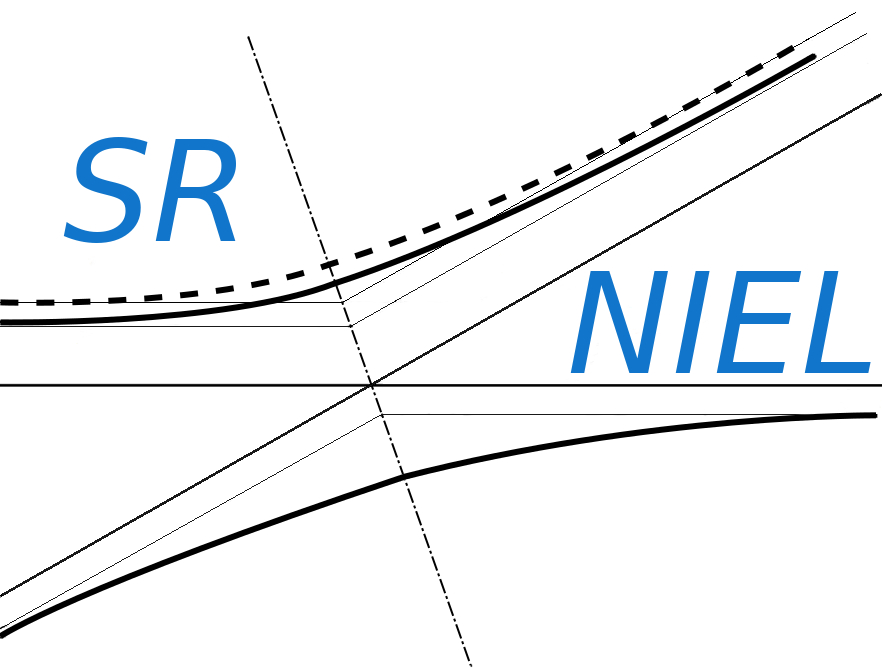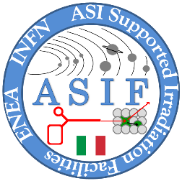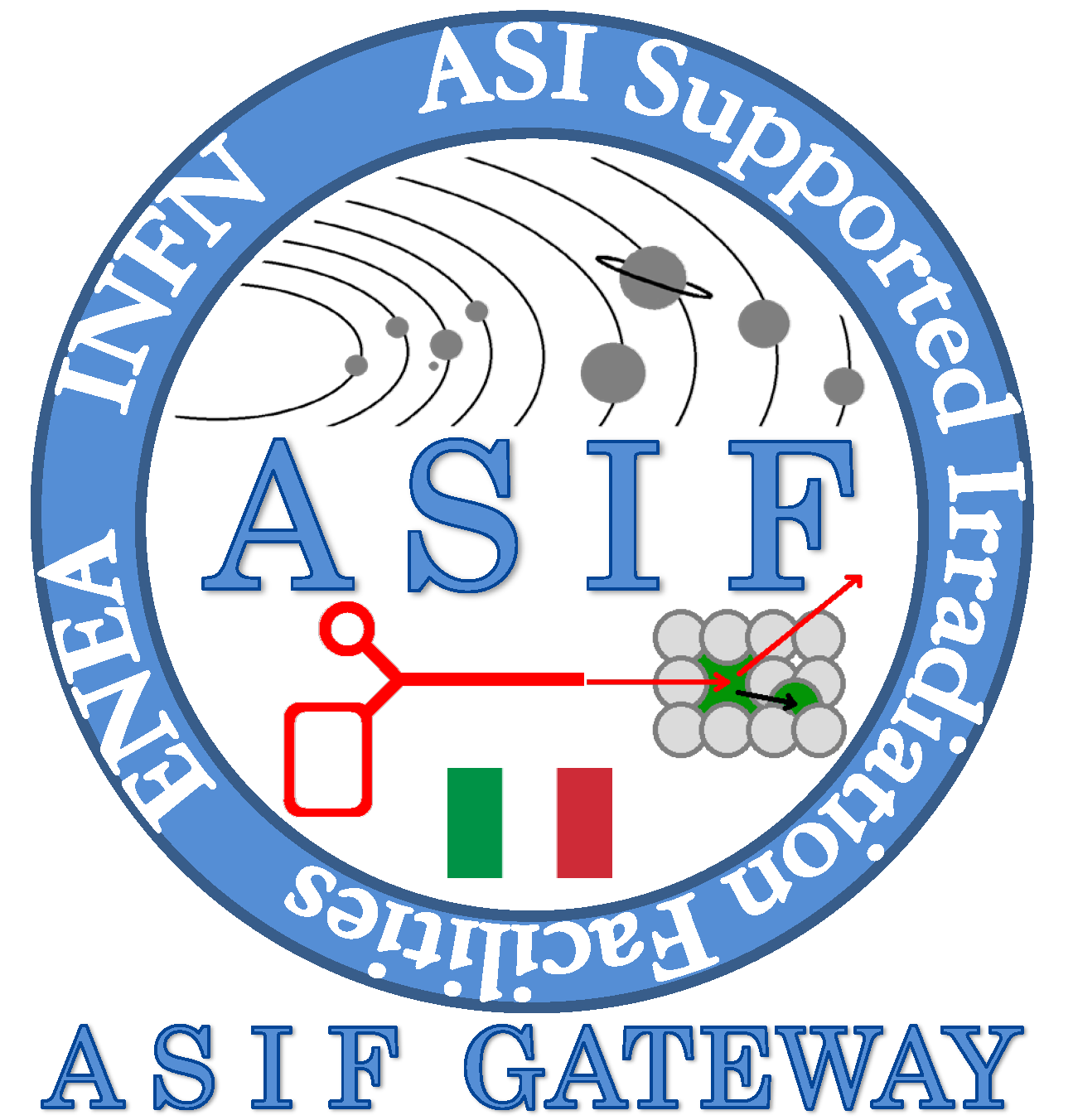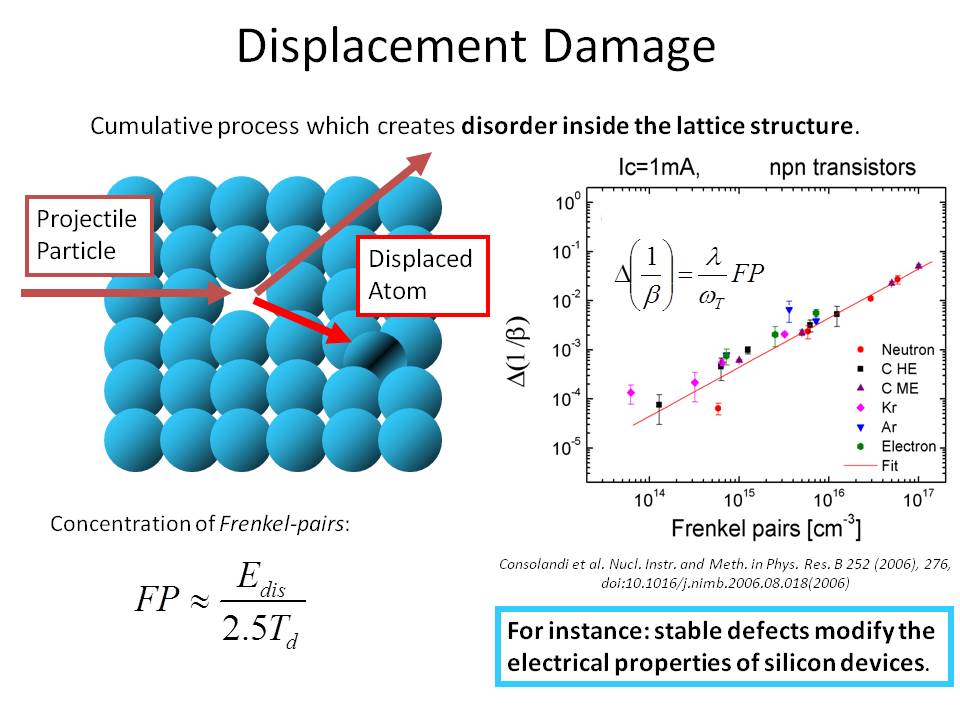Screened relativistic (SR) treatment for displacement damage NIEL doses (TNID) and nuclear stopping powers in materials; sr-framework for electronic stopping powers and restricted energy-losses, ionizing doses (TID); residual particle energy traversing shielding materials; single event effects (SEE) and Weibull functional form
NIEL dose and nuclear stopping power calculators for elements/compounds (e.g., semiconductors); electronic stopping powers and TID doses; SEE effects in devices; solar modulated cosmic-rays spectra at 1 AU and along mission orbits from HelMod-4 model
Website latest update on September 15, 2025
Welcome to SR-NIEL–7 Website supported within the framework of space radiation environment activities of ASIF, i.e., ASI (Italian Space Agency) Supported Irradiation Facilities. The sr-niel website was initially created in November 2014; the fundamental bibliography is provided here and at this page (see additionally SR-NIEL Framework: Physics Handbook). In these webpages, you find pieces of information about Screened Relativistic (SR) Calculators regarding Non-Ionizing Energy Loss (NIEL) of electrons, protons, ions and neutrons passing through a material and generating displacement damages which, in turn, may introduce deep levels resulting from the Frenkel pairs created. In semiconductors, these stable defects can finally degrade the device performance (for instance, they can affect the current gain of bipolar transistors). Further information on radiation damage assessment for space missions is available at ASIF website.
Moreover, calculators for the nuclear stopping powers and NIEL doses – e.g., TNIDs also termed displacement damage doses – of electrons, protons, light- and heavy-ions and for the probability of generating energetic recoil nuclei are available. These calculations are carried out based on the screened relativistic treatment for (elastic) Coulomb interactions on nuclei from low up to ultra-relativistic energies.
The notation of screened relativistic (SR) NIEL was introduced by Baur et al. (2014). Furthermore, the treatment is discussed in Sects. 2.2.1–2.2.2, 2.4.2–2.4.3, 7.1.1.6, 7.1.1.8, 11.3.1, 11.3.2 of Leroy and Rancoita (2016), e.g., see first sections of Physics Handbook on incoming massive particles and electrons.
Users should be informed that, in addition to the treatment of displacement damage mechanisms resulting from non-ionizing energy losses (NIEL), the topics included in this website were gradually extended – within the so-called SR-(NIEL) framework – to deal with the processes of electronic stopping powers, restricted energy losses, ionizing doses (TID) and effects due to large energy depositions in devices (i.e., SEE). Moreover, currently one can directly access to the solar modulated spectra for cosmic rays species with Z up to 28 from HelMod-4 model. These modulated spectra are derived by solving Parker’s equation (see here) when the local interstellar spectra (obtained from the join effort of GalProp-HelMod) are transported through the heliosphere.
From version 1.5.2, additionally, the estimates of recoil energy fractions deposited via ionizing and non-ionizing processes are accessible using two of the mostly employed analytical approximations of energy partition function. From version 2.0 the electronic stopping power and ionizing dose (TID) converter are also available.
From version 2.1 the current calculator allows one to obains NIEL values and NIEL doses (TNID) for neutrons in Si and GaAs absorbers, derived from ASTM-722-09, ASTM-722-14 and ASTM-722-19 standards.
From version 3.0 registered users can access to sr-niel web calculators with implemented the two of the mostly employed analytical approximations of energy partition function.
Currently, additional functionalities implemented into NIEL calculators available to registered users are:
- electron NIEL with Akkerman partition function;
- proton and ion NIEL with Akkerman partition function;
- NIEL dose calculators for neutrons and neutron spectral fluence in some elements (C, N, Si, Ga, As, from version 3.5.1 0, Al, P, In, Cd, Te, Ge, Zn, Se, Sb, from version 3.9 Cu, Hg, Pb, S, Sn, from version 3.9.2 B, Bi, Cl, Tl, from version 4.5.0 Li, Ti, Mn, Br, Sr, Nb, Mo, Ag, I, Ba, La, Eu, U and from version 4.6.0 also H, He, Be, F, Na, Mg, Ar, K, Ca, V, Cr, Fe, Co, Ni) and their compounds, using Robinson and Akkerman partition functions. The complete set of nuclei for neutron dose calculators was made avaible with version 5.0.0 and is illustrated at this page. From SR-NIEL–7 version 8.0, the neutron damage functions are available also using NJOY-2021 code. From version 8.5, NIEL dose calculation for neutron using Robinson and Akkerman partition functions are available obtained with NJOY-2021.
Furthermore, a critical discussion on the usage of 1 MeV neutron equivalent is also available to registered users.
In addition, the following long write-ups are available to registered users:
- NIEL for Electrons and Protons (with only Coulomb scattering and, also, including hadronic contribution) in Silicon employing Robinson and Akkerman partition functions;
- NIEL dose calculation for neutron using Robinson and Akkerman partition functions;
- comparison of Damage Functions obtained with Akkerman and Robinson Partition Functions for some compounds;
- determination of the Damage Function at 1 MeV for Si and some compounds.
More pieces of information about sr-treatment are currently available from the website section dedicated to the physics of displacement damage, due to neutron, proton, ion and electron interactions on nuclei, i.e., from the Physics Handbook.
At present, in the sr-niel website, calculators for ionizing energy losses (and doses) of electrons, protons and ions are available. From version 5.5 it is accessible a calculator to determine the residual spectral fluence for particles traversing a shielding material. From version 6.3.0, the web-calculators on electronic stopping powers – regarding the energy lost by particles traversing a medium – are complemented by those on restricted energy-losses to deal with both the energy deposited by incoming particles in absorbers and the approach to Fermi plateau at high energies.
From version 6.5.0, the occurrence probability of events due to a large energy deposition in devices - e.g., single event effects (SEE) - is additionally treated when it is induced by the electronic stopping power of incoming particles up to very hig energy; while from version 6.6.0 galactic cosmic rays fluxes are available from HelMod-4 model for being employed in sr-niel SEE calculator. From version 7.0.0, the SEE treatment is extended to deal with large energy depositions induced by Coulomb interactions on the nuclei of the absorber/target/device. Currently, the HelMod code relies on HelMod-4/CUDA, which is a GPU-accelerated method for solving the Parker Equation (e.g., see this webpage). It exploits an NVIDIA GPU farm developed under ASIF program.
From version 7.5.0, the sr-niel website is employing GEANT4 simulations to determine the equivalent SEE cross section for devices exposed to isotropically distributed particles from a Weibull function expression obtained using measurements with perpendicularly impinging particles on a device front face.
The treatment for the extension up to high energies of electronic stopping power and restricted energy loss for elements and compounds is referred to as SR-framework electronic stopping power and it is dealt in the section on Electronic stopping power up to high energy, restricted energy loss and Fermi plateau of the Physics Handbook.
Topics on electronic stopping power and restricted energy-loss are treated in the Physics Handbook which - from version 6.4.2 - is also enlarged by referring to those topics regarding activities discussed within ASIF (ASI Supported Irradiation Facilities), HelMod and GeoMagSphere websites.
Topics regarding ASIF space radiation environment and related models on solar modulation (e.g., HelMod for cosmic rays transport in the heliosphere) and particle transport in Earth magnetosphere (GeoMagSphere) are currently available in section Space Radiation Environment and Models: SR-NIEL and ASIF, HelMod, GeoMagSphere related activities. The solar modulation impact on TID doses and SEEs are discussed in the section on Effects of solar modulation on particle flux per unit area as a function of particle energy or electronic stopping power/restricted energy loss per unit length, i.e., on TID and SEE.
With version 7.5.0, the sr-niel website numbering has become SR-NIEL–7 version 7.5.
From SR-NIEL–7 version 9.5, the website was operated on a virtual server in VDC (Virtual Data Center) environment at CINECA. Currently, from version 10.14 it is operated on a virtual sever at the Italian Space Agency, ASI.
From version 10.0, additional calcolators employing GEANT4 simulations are available to determine the residual spectral fluence of isotropically distributed electrons, protons and ions traversing spherical absorbers.
From version 10.2, further additional functionalities are available to specific users involved in SR-NIEL–7 development and ASIF activities on Space Radiation Environment. Furthermore, from version 10.20, a FAQ section is available to registered users.
This project is part of the activities involving also sr-niel / HelMod /geomagsphere / ASIF /AMS-02 Milano Bicocca group.
The implementation of derived sr-niel calculators into ESA (European Space Agency) codes (e.g., SPENVIS, GRAS and Mulassis) was accomplished under ESA contract 4000116146/16/NL/HK with title "Non-Ionizing Energy Loss (NIEL) Calculation and Verification".
Following ASIF implementation agreements 2017-22-HD.0 ASI-ENEA, 2017-15-HD.0 ASI-INFN, 2021-39-HH.0 ASI-ENEA, 2021-36 HH.0 ASI-University of Milano-Bicocca and 2024-21-HH ASI-INFN, the ASIF and ASIF gateway websites, the sr-niel, helmod and geomagsphere websites are mantained within the space radiation environment activities of ASIF framework. Their websevers are handled by means of ASIF support center at the Physics Department of Milano-Bicocca University and are operated by virtual servers at the Italian Space Agency, ASI.
For any comment, remark and suggestion, please contact us by email at





